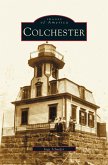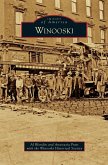Of the five Upper Connecticut River valley towns chartered by the royal governor of New Hampshire on July 4, 1761, the town of Hartford became the most diverse and pivotal within the region. Located at the intersection of the Connecticut and White River valleys, by the early 19th century Hartford played an important role in the development of river travel, as well as the turnpikes and stage lines crossing northern New England. By mid-century, White River Junction, one of Hartford's many diverse villages, was the region's most important railroad center. Within other areas of Hartford, abundant waterpower allowed for substantial development of manufacturing at Quechee, Dewey's Mills, Hartford Village, and Wilder. Like other towns in the Connecticut River valley, agriculture flourished in the town's rural areas. By the mid-20th century, two of the Northeast's most important new interstate highways crossed within Hartford's borders.
Hinweis: Dieser Artikel kann nur an eine deutsche Lieferadresse ausgeliefert werden.
Hinweis: Dieser Artikel kann nur an eine deutsche Lieferadresse ausgeliefert werden.








